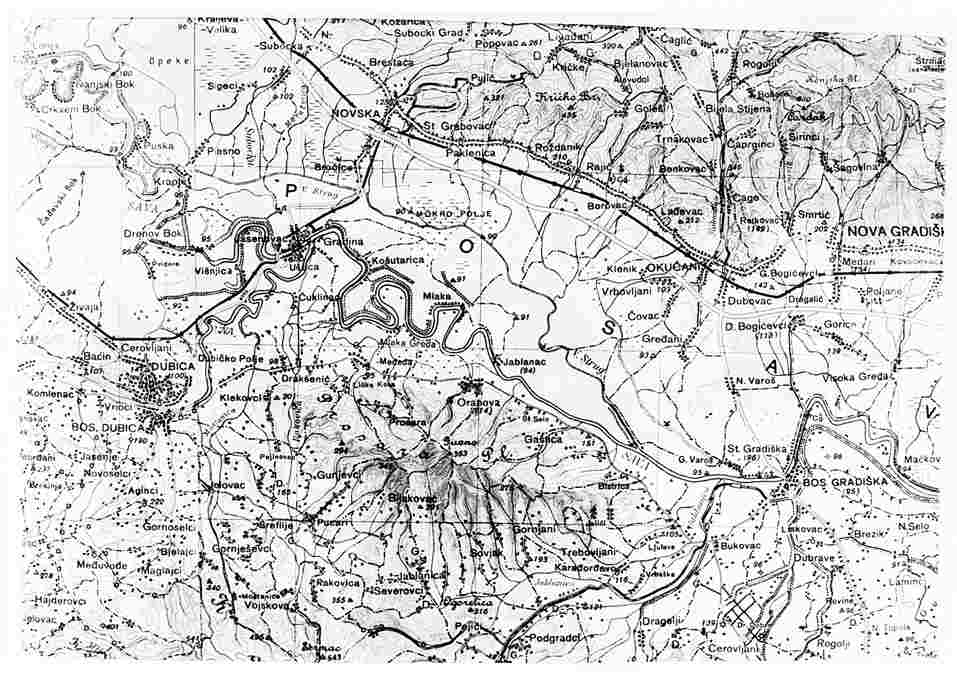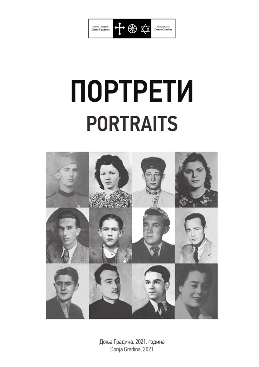The journal “Topola” published by the Public Institution “Donja Gradina Memorial Area” is a scientific journal that is published once a year. The main goals of the magazine are researching the history of the wider area of Kozarska Dubica, then researching the history of genocide and war crimes in the territory of the Independent State of Croatia (1941-1945) with a focus on the Jasenovac concentration camp and its largest execution site in Donja Gradina, as well as the development of critical reflection on topics such as are genocide, war crimes and the Holocaust in the Second World War. In accordance with these goals, the magazine is characterized by a special structure and subject matter. You can view the instructions for associates in the attachment:
Instructions for authors
Topola: Journal of Memorial Zone Donja Gradina1 is a scientific journal published annually in one or more issues. Two primary goals of this journal are: 1.) to foster the research of history of the wider geographic region of Kozarska (Bosanska) Dubica, 2.) to further the ongoing historical and multidisciplinary research into the history of genocide and war crimes on the territory of the Independent State of Croatia (NDH) (1941–1945), focusing on the Jasenovac concentration camp, as well as to to encourage the critical examination of issues such as genocide, war crimes and the Holocaust during the Second World War. Based on those premises, the journal is structured through following sections:
1.) Historical Research This section is intended for scholarly texts that explore the history of Dubica, its wider geographic region, including Kozara and Prosara mountains, as well as the entire territory surrounding the Una and Sava rivers from Kostajnica to Gradiška, with both sides of the riverbanks, and without a time-frame. In this section we may also publish the histories of wider regions (such as Pounje, Bosanska Krajina, Banija or Western Slavonia), as well as vintage historical texts in any historiographic form.
2.) Studies of War and Genocide This part of the journal is focused on those issues that are of special interest for the Memorial Zone Donja Gradina. Here, we will publish scientific papers that talk about the Jasenovac concentration camp, war crimes, destruction of society and loss of civilian life during the war, genocide, other concentration and death camps in NDH and beyond, the Holocaust in Europe under Third Reich and so on. Papers that approach these issues from a generalized, theoretical and psychological viewpoint are also suitable, as well as histories of WW2 in occupied Yugoslavia. 3.) Documents and Testimonies Section dedicated for publishing historical sources — archival documents and testimonies. Primarily, we will publish those sources that give us an insight into history of Jasenovac concentration camp, as well as history of war and war crimes on the territory of NDH (1941– 1945). Secondly, we will publish historical sources of special scientific and educational significance for the history of the Dubica region, without a time-frame.
4.) Perspectives The journal also encourages authors to contribute their short essays that critically analyze and rethink any given opinions, trends, processes or other texts in connection to issues of special interest for our journal, such as war crimes, loss of life and the Holocaust in the Second World War, as well as its corresponding memory culture. In extraordinary cases we may also accept longer texts.
5.) Contributions Section for other texts that due to their form do not belong to any of the previous sections. Here, we will publish reviews of books which are conceptually related to our issues, reports on activities of the Memorial Zone Donja Gradina and similar institutions, reports on educational activities concerned with war crimes and genocide in Second World War, interviews with curators, teachers, researchers etc. 1 Topola (Топола), noun — Poplar [Lat. Populus]; the „Poplar of Horror“ was a poplar tree located at the bank of Sava and Una rivers, used as gallows by the executioners from the Jasenovac Concentration Camp.
Authors who send their papers must also write down their full name, institution and an e-mail address. Papers for first, second and third section are treated as works of scientific character, so they have to include an abstract (up to 150 words), key words (10 at most) and a summary that will be translated to Serbian language. Papers for first and second sections without an exception must be academic in nature and must include references (citation). They also have to meet one of two demands: 1.) original academic contribution to our understanding of issues dealt with by the text, with addition of new facts and perspectives (original scientific paper), 2.) a synthesis of results offered by current research in the humanities, or a critical review of that research (review article). Texts intended for the third section, if they are presenting archival records, those records must contain the name of the archival institution, record group (fond) or a record collection name and a signature. Authors are responsible for a precise transcription of documents and testimonies. Texts intended for a fourth or a fifth section are not treated as scientific papers. Authors should send their papers to the Editorial Board’s email address, in DOC or DOCX formats, A4 paper size, font Times New Roman or Liberation Serif, font size 12 (10 for footnotes), spacing 1.0. Authors should use proper English language quotation marks, [ “ ] and [ ” ]. Please insert your footnotes after punctuation marks. Do not insert them in your abstract. Papers for the first two sections should span up to 16 pages, but we’re open for even longer papers if they are of high academic quality. Transcriptions of documents and testimonies for the third section texts should be typed in font size 11, while author’s own comments would retain size 12. Texts intended for our fourth section (“Perspectives”) should be up to 6 pages long (size A4), while longer text may be acceptable under special circumstances. References are to be written in footnotes (not endnotes). Archival records are cited in the following manner: institution (abbreviation), record group or collection (its number or its sign), reference code; onward in a shortened version. For example: — National Archives and Records Administration (NARA), Foreign Record Seized (RG 242), T314, roll 560, frame 1280. — NARA, RG 242, T314, roll 560, frame 1280. Reference to books should be starting with the author’s name, followed by the title (italic), publication place and year, page number: — Milan Ristović, U potrazi za utočištem: jugoslovenski jevereji u bekstvu od Holokausta 1941–1945, Beograd 1998, 50. — M. Ristović, U potrazi za utočištem…, 94. Texts published in journals and conference proceedings should start with the author’s name, followed by the title of the text (in quotes, no italics), name of the publication (in italics, no quotes), editor’s name, location and year (if it is a journal, location should be written in parentheses after the publication, followed by the issue’s number outside, and a year inside a new pair of parentheses), ending with a page number: — Olga Manojlović Pintar, “Još jednom o Milanu Nediću, emigraciji i reviziji istorije”, in: Preispitivanje prošlosti i istorijski revizionizam: (zlo)upotrebe istorije Španskog građanskog rata i Drugog svetskog rata na prostoru Jugoslavije, ed. Milo Petrović, Belgrade 2014, 307. — O. Manojlović Pintar, “Još jednom o Milanu Nediću…”, 309. — Alan Labus, “Bitka za Staljingrad i promidžba NDH: kako je po odluci vodstva NDH poraz Osovine u tisku NDH pretvoren u pobjedu”, in: Časopis za suvremenu povijest (Zagreb), no. 1 (2010), 79. — A. Labus, “Bitka za Staljingrad i promidžba NDH…”, 82. Texts from the internet should have the same form, while a web address must be placed in angle brackets with a date of the access; if an address is longer than 50 characters, please use only the address of the given website:
— “The Trial of Adolf Eichmann”, Session 46, Part 5 of 6, 2012. <www.nizkor.org> (10. 10. 2020) — “The Trial of Adolf Eichmann”. Authors whose texts, written in English, were accepted for publication, must provide a proofreader. All texts will be taken into consideration by the Editoral Board and sent to two anonymous reviewers. Each text has to be recommended by both reviews. Those that do not conform will be rejected, while others that could be published given some improvement, will be sent back to the author with an anonymous comment. Editors may change the title of the paper if they consider the existing one inadequate in relation to the content.
Deadline: March 31st 2023
E-mail address: redakcija@jusp-donjagradina.org

